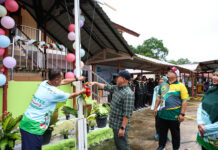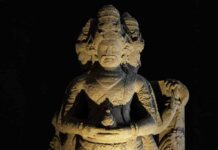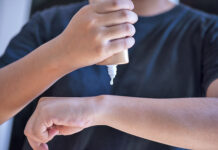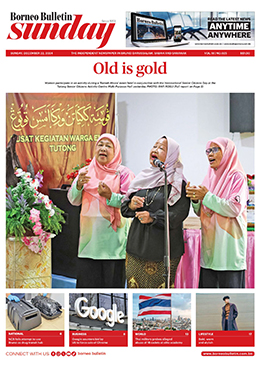Daniel Lim
The Chinese New Year celebrations is a time for the Chinese people around the world to practise time honoured traditions and spend time with family, while looking forward to the future with the hope of good health and prosperity.
Also known as the Lunar New Year, festivities are often associated with extravagant fireworks displays, loud firecrackers, and iconic lion dances.
It is also a time for reunion dinners and bai nian – the social gatherings and visits to relatives, friends and neighbours.
For the first 15 days of the Chinese New Year – this year being the Year of the Tiger – those celebrating will follow customs and festivities associated with specific days.
The days leading up to the celebrations is when most of the housekeeping activities happen.
Families thoroughly clean their houses, sweeping away ill fortune and making way for the incoming good luck.

They decorate the doors and the household with various paper-cuts and couplet, as well as lanterns, all in the colour red symbolising good luck and joy, and also as a ward against evil spirits.
Iconic among the decorations is the Chinese character Fu, meaning blessing or happiness, usually printed on a diamond shaped red paper cutout.
While some might hang the Fu upside down, signifying the pouring of blessing or happiness, others see it as pouring the blessing and happiness away, so the orientation in which it is hung can vary.
On the eve of the first day of Chinese New Year is the family reunion dinner, which after feasting, will culminate in the lighting of fireworks and firecrackers.
The loud display is not just for the spectacle. Instead, it stems from a tradition when gunpowder was used in bamboo stems to ward off evil spirits with small explosions, in the belief that the noise would chase off any unwanted, lingering presence.
Since then, it has evolved into the iconic long string of red coloured firecrackers and became an integral aspect of the celebrations.
On the first day, close and immediate family members gather to celebrate, wearing new clothes and shoes as a sign of a fresh new beginning.
Parents will give red envelopes or angpao to their children, which stems from a legend saying wrapping money in red paper can help protect their children.
There are also some common taboos: Sweeping the floor being forbidden, as it may sweep out any good luck that was brought in, and avoid breaking anything, in particular porcelain, which is an ill omen.
The second day of the celebration and onwards is where families visit close friends and relatives, as well as welcome guests to their homes to exchange new year greetings, give angpao and spend time together.
Many of these gatherings are also accompanied by lion dances, and keeping to the belief that evil spirits dislike noise, there is plenty drumming and loud sounds.
The aggressive lion dance itself is said to be chase off evil.
The seventh day of the Chinese New Year celebration, called Renri, marks the the birth of mankind according to Chinese traditions and legends.
A signature dish is the yee sang or ‘prosperity toss’, with the height of the toss reflecting the height in the growth of fortunes.
Following that, over the next week, as people start to shift back to their daily commute and work, the celebrations will continue to be observed until the 15th day which is referred to as Lantern Festival, yuan xiao jie or more colloquially known as chap goh meh or fifteen nights in Hokkien dialect.
On this day, the consumption of tang yuan or glutinous rice is not uncommon.
Made into the round shape of the ball the delicacy symbolises family togetherness, and the belief is that eating them brings family harmony, happiness, and luck for the new year.
CELEBRATING DURING THE GLOBAL PANDEMIC
With the ongoing effects of the global pandemic, the Chinese New Year celebrations have been more muted, as many are concerned about their health and safety.
For the 2022 Year of the Tiger, the usual activities, such as gatherings and lion dances have been scaled down. Even so, the celebration is still a mainstay for many of the Chinese communities across the nation and the world, with many spending it with close families
and friends.



















































